SIGGRAPH 2007: Global Eyes
Chair(s):
- Vibeke Sorensen
-
- University of Buffalo
- Arizona State University
Location:
San Diego, California, United States of America
Dates:
August 5th-9th, 2007
Art Show Overview:
Welcome to Global Eyes, the 2007 Art Gallery. This year’s show focuses on transdisciplinary and transcultural approaches to digital art created around the world. Many countries and cultures are represented, including Argentina, Australia, Austria, Bangladesh, Belgium, Brazil, Canada, China, Colombia, Croatia, Egypt, England, France, Germany, Hong Kong, Hungary, India, Iran, Ireland, Italy, Japan, South Korea, Latvia, Mexico, New Zealand, Romania, Russia, Taiwan, Turkey, Ukraine, Venezuela, Wales, and the USA. We tried to be as inclusive as possible, welcoming artists from communities that are historically under-represented at the SIGGRAPH conference. Through rigorous and energetic reviews by the Art Gallery Jury and the international Art Gallery Committee’s thoughtful curatorial work, we succeeded in extending our scope to new communities in the developed and developing world, including indigenous communities locally, regionally, and internationally. Our delight with this greater participation is mitigated only by the fact that enormous disparities still exist in resource availability between nations and populations, which limits digital visual culture’s potential to become more globally democratic and inclusive.
We are happy that so many mature artists from around the world submitted work for jury review. The Art Gallery Committee augmented this process by inviting artists whose work directly relates to this year’s global theme, many of whom work in emerging areas of digital art. Growing from transdisciplinary activity across fields as well as cultures, digital ethnographic multimedia is one such area developing in the space between digital photography and video, animation, interactive art and performance, and ethnography.
We are delighted to welcome indigenous artists working in San Diego, Mexico, New Mexico, and Australia, including Cedar Sherbert (Kumeyaay), Damian Lopez Castillo (Zapoteco), Anthony Deiter (Plains Cree I Ojibwe), and r e a (Gamilaraay / Wailwan). In addition, Roderick Coover, Toby Lee, and J.P. Sniadecki are producing important work at the intersection of interactive art, digital video, and anthropology. Kooj Chuhan and virtual migrants work with immigrant communities in the United Kingdom and perform work that gives greater insight into the condition of people in the diaspora.
Because 75-90% of the earth’s people are still not connected by digital technology, and express their knowledge and culture in material media, most of their knowledge remains outside the digital realm. However, important work is being done to preserve and expand our collective human heritage using hybrid physical-digital processes. A transfer and transformation is taking place that expands the language and creative potential of digital media art, making it more intelligent and responsible, providing entry for people in many walks of life. That is why we are welcoming folk as well as fine-art approaches, handcraft and design, artist books, sculpture, and mixed media, while also showcasing contemporary digital artwork that is unique unto itself.
This includes Most Wanted by Taraneh Hemami, a handmade curtain of 87,000 beads; Worldprocessor by lngo Gunther, a series of more than 25 illuminated modified globes; as well as beautiful limited-edition books created by artists who are collaborating around the world, in some cases extending the concept of the travel diary to new forms of collaborative and mobile media art.
Some pieces in the gallery comment on political, social, and environmental problems, and question human relationships to nature, both actively (as our environment faces destruction and species extinction), and in personal, introspective, and philosophical terms. Artists working together with scientists externalize their deepest beliefs and doubts about the mysteries of life and existence. Some take the form of abstract images to reveal underlying organizing principles of the mind, body, and nature; others use visualization, real-time 30 animation, dance and performance, robotics, and interactive installation. Online and immersive works challenge definitions and categories, transcending boundaries of language, time, space, and location in their beauty and daring. Some are meant to make us question our assumptions, while others show us our human frailties and contradictions in playful and humorous ways. Ben Maggos (1981-2005), whose memory we are honoring, created the prescient and moving work What About Job? that explores many of these ideas in interactive, cinematic form.
This year’s show features several invited special exhibitions. We are honored to include a selection from the online international photography collection ZoneZero.com, directed by acclaimed photographer Pedro Meyer, as well as 20 works from the 2007 Visual Music Marathon (held at Northeastern University) curated by Dennis H. Miller. The Japan Media Arts Festival has provided a special selection of work from their most recent show, including digital prints and animation by the talented 14-year-old artist, Shunsaku Hayashi. And for the first time this year, we are working with the Guerilla Studio to show the work of six Artists-in-Residence: Harriete Estel Berman, Matt Hamon, Philip Mallory-Jones, Mike Simonian, Maaike Evers, and Michael Wright.
We are especially pleased to present an exciting program of innovative electronically mediated performances and site-specific installations by leading international artists. They are taking place in a special weekend engagement (4-6 August) at the state-of-the-art facilities of the California Institute for Telecommunications and Information Technology (Cal-lT2) and the Center for Research in Computing and the Arts, at the University of California, San Diego.
Papers were curated by media scholar Cristina Venegas, whose expertise is in global and indigenous media, particularly in Latin America. She brings together writers and theorists with fresh perspectives on our field. Panels were curated by the Art Gallery chair, with a special contribution from Roger Malina and ISAST Leonardo.
Finally, as 2007 is the 25th anniversary of the 1982 SIGGRAPH Art Show, we are exhibiting an electronic archive created by 1982 chair Copper Frances Giloth.
Please join us in celebrating these and many other participating artists whose work has inspired us through the years and help us welcome new people and ideas into our growing global digital art community.
Vibeke Sorensen, Global Eyes Chair
Art Gallery: Global Eyes Chair
Vibeke Sorensen, University at Buffalo, New York, USA
Art Gallery: Global Eyes Associate Chair
Lina Yamaguchi, Stanford University, California, USA
Art Papers Subcommittee Chair
Cristina Venegas, University of California, Santa Barbara, California, USA
Performance Subcommittee Chair
Shahrokh Yadegari, University of California, San Diego, California, USA
Computer Technology Subcommittee Chair
Victoria Szabo, Duke University, North Carolina, USA
Video Technology Subcommittee Chairs
Goldie Chaudhuri, XSV
Jana Whittington, Purdue University Calumet, Indiana, USA
Acknowledgements
Thanks to the following people and institutions:
Aaron Baker, Arizona State University
Roger Malina, ISAST Leonardo
Marilenis Olivera,
Stanford University, The Stanford Writing Center and the English and Linguistics Departments for the generous use of their facilities
Stanford University Office of the Vice Provost for Undergraduate Education
Larry Smarr, Director, Cal-lT2
Ramesh Rao, Director, Cal-lT2, University of California, San Diego Division
Sheldon Brown, Cal-lT2 and the Center for Research in Computing and the Arts (CRCA)
Committee(s):
- Robert Epp
-
- University of Manitoba
- Francisco Marinho
-
- Universidade Federal de Minas Gerais
- Marilenis Olivera
-
- Stanford University
- Victoria Szabo
-
- Duke University
- Cristina Venegas
- Jana Whittington
-
- Purdue University, Calumet
- Shahrokh Yadegari
- Akihiko Shirai
General Committee:
Visual Proceedings:
View PDF: [SIGGRAPH 2007: Global Eyes]
Exhibition Artworks:
-
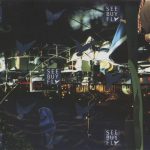
See – Buy – Fly
[Solvita Zarina]
Categories: [2D & Wall-Hung] -
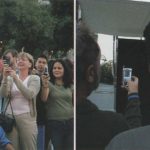
SEEN-Fruits of our Labor
[Omar Khan] [Osman Khan]
Categories: [Installation] -
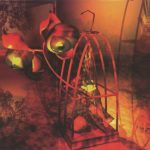
Self-Transparency
[Arina Melkozernova]
Categories: [Animation & Video] -
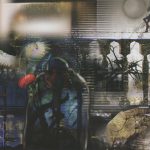
SelfPortrait06_Diptych
[Man Chi-Wah]
Categories: [2D & Wall-Hung] -
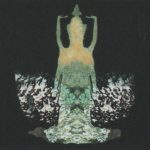
Seven Sisters
[Kathy Beal]
Categories: [Artist Book] -
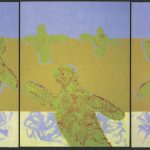
Silent Dancing
[Max Chandler]
Categories: [2D & Wall-Hung] -

Something That Happened Only Once
[Roderick Coover]
Categories: [Interactive & Monitor-Based] -
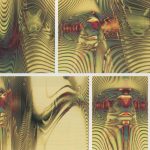
sonata (pipilo)
[Brian Evans]
Categories: [2D & Wall-Hung] -
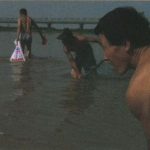
Songhua
[J. P. Sniadecki]
Categories: [Interactive & Monitor-Based] -
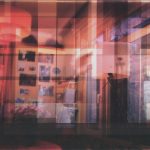
soul of the place - genius loci
[Murat Germen]
Categories: [2D & Wall-Hung] -
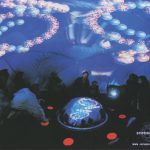
SphèrAléas
[Scenocosme]
Categories: [Installation] -
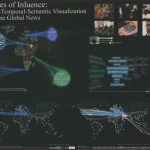
Spheres of Influence
[Alex Villacorta]
Categories: [Interactive & Monitor-Based] -
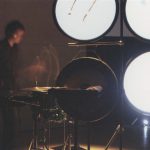
Substitute Judgement + Mental Catalogue
[Ross Karre] [Jeffrey Treviño]
Categories: [Performance] -
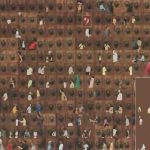
Sunday Morning at the City Hall Doors / ...
[Copper Frances Giloth]
Categories: [2D & Wall-Hung] -

Super*Nature
[Guan Hong Yeoh]
Categories: [2D & Wall-Hung] -
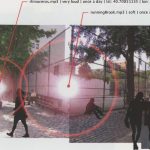
Tactical Sound Garden Toolkit
[Mark Shepard]
Categories: [Installation] -
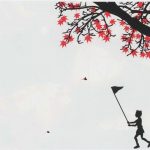
Takashi's Seasons
[Takashi Kawashima]
Categories: [Performance] -
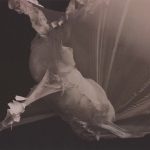
Texture of Reality No.7
[Andrzej Zarzycki]
Categories: [2D & Wall-Hung] -
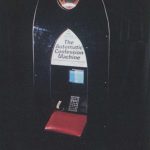
The Automatic Confession Machine A Catho...
[Gregory P. Garvey]
Categories: [Installation] -
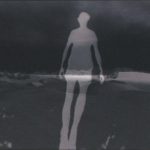
The Night Journey: Walk Through
[EA Game Innovation Lab]
Categories: [Interactive & Monitor-Based] -

The Orb
[James Nick Sears]
Categories: [Installation] -
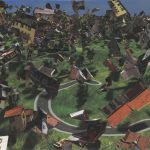
The Scalable City
[Sheldon Brown]
Categories: [Installation] -
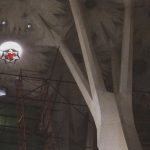
The Search of Form, the Search of Order:...
[Carlos Barrios]
Categories: [Design] -
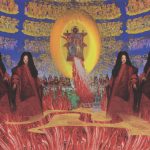
The Travels of Mariko Horo
[Tamiko Thiel]
Categories: [Augmented Reality/Virtual Reality] [Installation] -

The Weight of Reason (After Goya)
[Davida Kidd]
Categories: [2D & Wall-Hung] -

These are Some Jews that Hitler Did Not ...
[Dena Elisabeth Eber]
Categories: [Artist Book] -
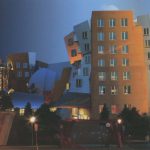
Time Bracketing Study: Stata Latin
[Guy Hoffman]
Categories: [2D & Wall-Hung] -

Topography Drive (Pacific Rim)
[Ingo Günther]
Categories: [Installation] -
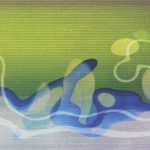
Transpacific
[Masakazu Takano]
Categories: [2D & Wall-Hung] -
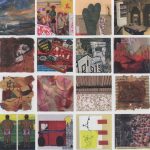
V9-U9 A Digital Portfolio
[Sushma Bahl] [Tom Piper]
Categories: [2D & Wall-Hung] -

Viral Confections
[Caitlin Berrigan]
Categories: [Installation] -

Visual Genealogy
[Jin Wan Park] [June Seok Seo]
Categories: [2D & Wall-Hung] -
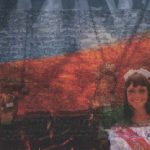
Viva la Revolution
[Nataliya Nadtoka]
Categories: [2D & Wall-Hung] -
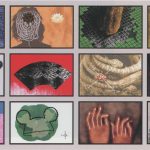
West Meets East: Artworks based on a jou...
[Kent Manske]
Categories: [Artist Book] -
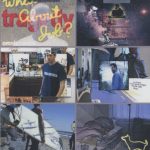
What About Job?
[Ben Maggos]
Categories: [Interactive & Monitor-Based] -

What If I'm Not Real
[Kooj Chuhan]
Categories: [Performance] -

Windowseat Lounge
[Maaike Evers] [Mike Simonian]
Categories: [Installation] -
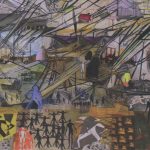
Wires
[Ana Z. Ursyn]
Categories: [2D & Wall-Hung] -

Witness No.02 and No.04
[Viktor Koen]
Categories: [2D & Wall-Hung] -
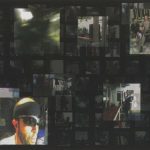
WORLD
[Santiago Echeverry]
Categories: [Interactive & Monitor-Based] -
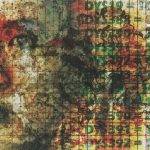
World Identity Cards
[Joe Nalven]
Categories: [2D & Wall-Hung] -

Wu Wei
[Shawn Lawson]
Categories: [Installation] -
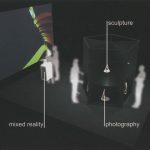
_zur form
[Thomas Kienzl]
Categories: [Installation]
« First
‹ Previous
1
2
Exhibition Writings and Presentations:
-
Title:
Around the Antenna Tree: The Politics of Infrastructural Visibility
Author(s):
Category: Essay
Abstract Summary:
With the globalization of mobile telephony during the past two decades, cell towers have sprouted up across different parts of the world. The “unsightliness” of these towers has resulted in responses ranging from neighborhood protests to manufacturers’ concealment strategies. This essay explores the installation of towers in different locations from urban spaces to national parks and considers how their emergence relates to a set of concerns about technology, knowledge, and power.
In addition to examining cell towers in different environments, I describe various “concealment strategies,” including covering towers in tree camouflage, mosque minarets, flagpoles, birds’ nests, and other hiding places. I explore what is at stake in hiding infrastructure and how such practices end up trading technological awareness for a highly synthetic version of “nature.” By disguising infrastructure as part of the natural and/or built environment, such strategies keep citizens naïve and uninformed about the network technologies they subsidize and use. Finally, I consider whether it might be possible to develop modes of affective engagement with infrastructure sites such as cell towers by discussing the work of artists such as Robert Voit (Enchanted Wood), Marijetica Potrc (Permanently Unfinished House with Cell Phone Tree), and Olaf Nicolai (Antenna Tree).
Communication infrastructures are frequently visualized as flow diagrams designed to approximate the spatial relations of a network. As a result, there is a tendency to overlook the uniqueness of particular nodes in a network: their physical form, the stories of their development, or the practices that surround them once they are activated. The antenna tree, I want to suggest, represents the potential to develop a more nodecentric and materialist approach to the study of infrastructure. As a cell tower disguised as a tree, the antenna tree draws attention to the materiality of infrastructure in the very process of trying to conceal it. People often chuckle at these uncanny objects that have been designed to soften the severity of the steel tower with botanical plastics. This tower in disguise not only relays signals, but it is implicated in an array of industrial, legal, and socio-cultural relationships. Each antenna tree can be understood as a symptom of processes of fabrication and installation, state and local regulation, community deliberation, and urban transformation. Thinking around the antenna tree, then, involves considering the fields of negotiation that are produced as an effect of infrastructure development and placement.
In this essay, I describe the emergence of cell-tower concealment strategies and discuss art works by Robert Voit (Enchanted Wood) and Marijetica Potrc (Permanently Unfinished House with Cell Phone Tree) that integrate antenna trees and provoke discussions of infrastructural in/visibility. I explore what is at stake in hiding infrastructure and how such practices may end up trading technological awareness for a highly synthetic version of “nature.” By disguising infrastructure as part of the natural environment, concealment strategies keep citizens naïve and uninformed about the network technologies they subsidize and use each day. We describe ourselves as a “networked society,” yet most members of the public know very little about the infrastructures that support that designation in broadcasting, web, or wireless systems. This issue of infrastructure literacy becomes more prescient as we enter an era of ubiquitous computing in which many different kinds of objects and surfaces will be used as relay towers and/or web interfaces. Since infrastructure sites are becoming more pervasive and less invisible, the work of visual artists can be extremely important in drawing our attention to them and triggering conversations about their design, placement, and effects.
[View PDF]Title: Building Possible Dreams
Author(s):
Category: Essay
Abstract Summary:
Never before have media had such a strong effect on life as in the 21st century. Looking at the history of moving images in the previous century – the visions and agendas of filmmakers, corporations, and governments – we find evidence of the potential for humanistic inclusion and exclusion. Do digital media increase our understanding of life and cultures? Is there the potential to know ourselves better by recreating life in an artificial environment? Is the fascination with artificial worlds proof of our limited understanding of the “analog” human experience? It is possible to control and destroy cultures. When it happens, human heritage is impoverished, and the world has less
diversity and less focus. The corporate digital media revolution is a kind of involution, a return to the type of destruction of colonial eras that exploited continents. With the current level of destruction at its highest level, our life experience is disconnected
from the physical world. Digital media can be a negative game, entertaining young people with virtual destruction, preparing them for analog wars and a multifaceted system of economic domination. Misinformation, decreased plurality of viewpoints, increased disconnection with life, and the spectacularization of human experience are only some of the symptoms of the strategies used by the corporate media world. Our analog lives need analog values connected to nature and respect for our planet and its fragile resources. These values must inform our digital world.
Title: Identifying New Myths for Convergence and Creative Collaboration in the Age of Digitalia
Author(s):
Category: Paper
Abstract Summary:
To assume that it is possible to predict the future of technology innovation beyond the next week, month, or year is sheer folly. To believe that our participation in endless think tanks, conferences, or seminars will shape a consensual vision, one that we all agree may be worth perpetuating, is merely an elitist group exercise in courage. I propose another scenario: that business, educational, and cultural institutions exist as the sum total of the myths they believe about themselves. In this context, myths are not only about who we are, they are essential to the development of all human understanding and belief systems. This practice is not to be confused with acquired situational narcissism, a self-bestowed sense of ingratiation, but a shared belief that the invention of new myths is an on-going design and discovery process unique to all sensing/feeling human beings. Such an enterprise evolves into creation of enlightened and expressive forms through continuous real-time simulation of living and learning in the stacking of moments. The challenge is to prepare individuals to adapt to rapid changes, ones we can’t even imagine, and to prepare to be comfortable living through one’s imagination, and to trust and embrace the inevitable transformations that will challenge future participatory energies.
[View PDF]Title: Transdisciplinarity, Yesterday and Today
Author(s):
Category: Paper
Abstract Summary:
In the first part, this paper intends to show some reasons for the advent of transdisciplinarity as a strategy of knowledge in the 21st century. In the second part, it develops the basis for a transdisciplinary attitude required to solve complex and contemporary problems, and to promote a new articulation among science, art, technology, and culture.
[View PDF]



